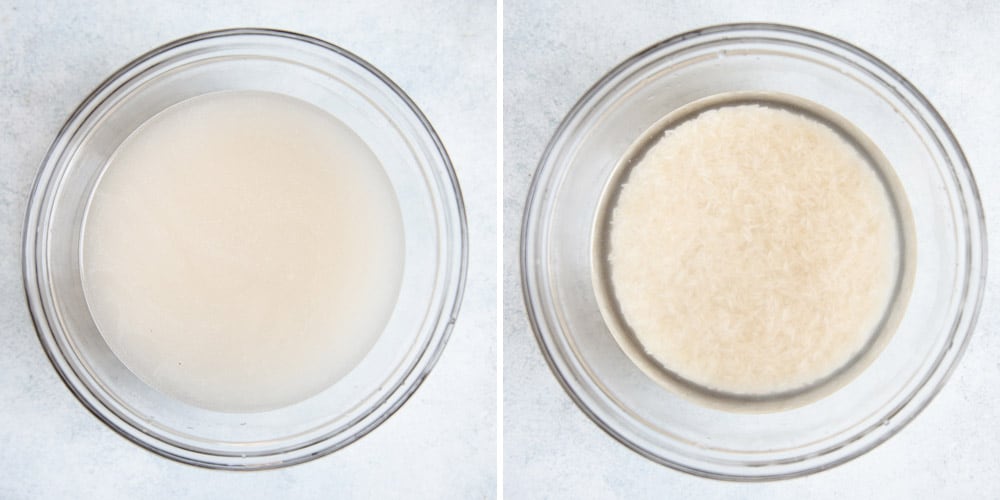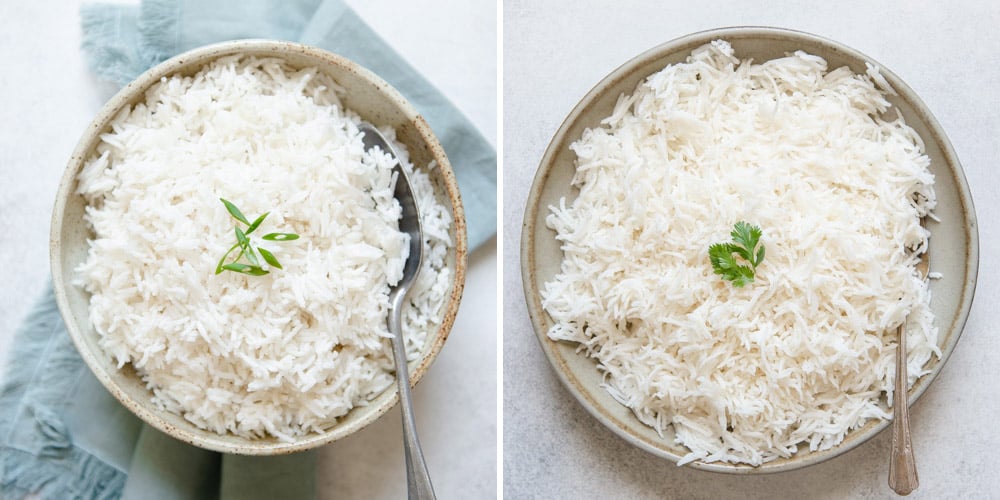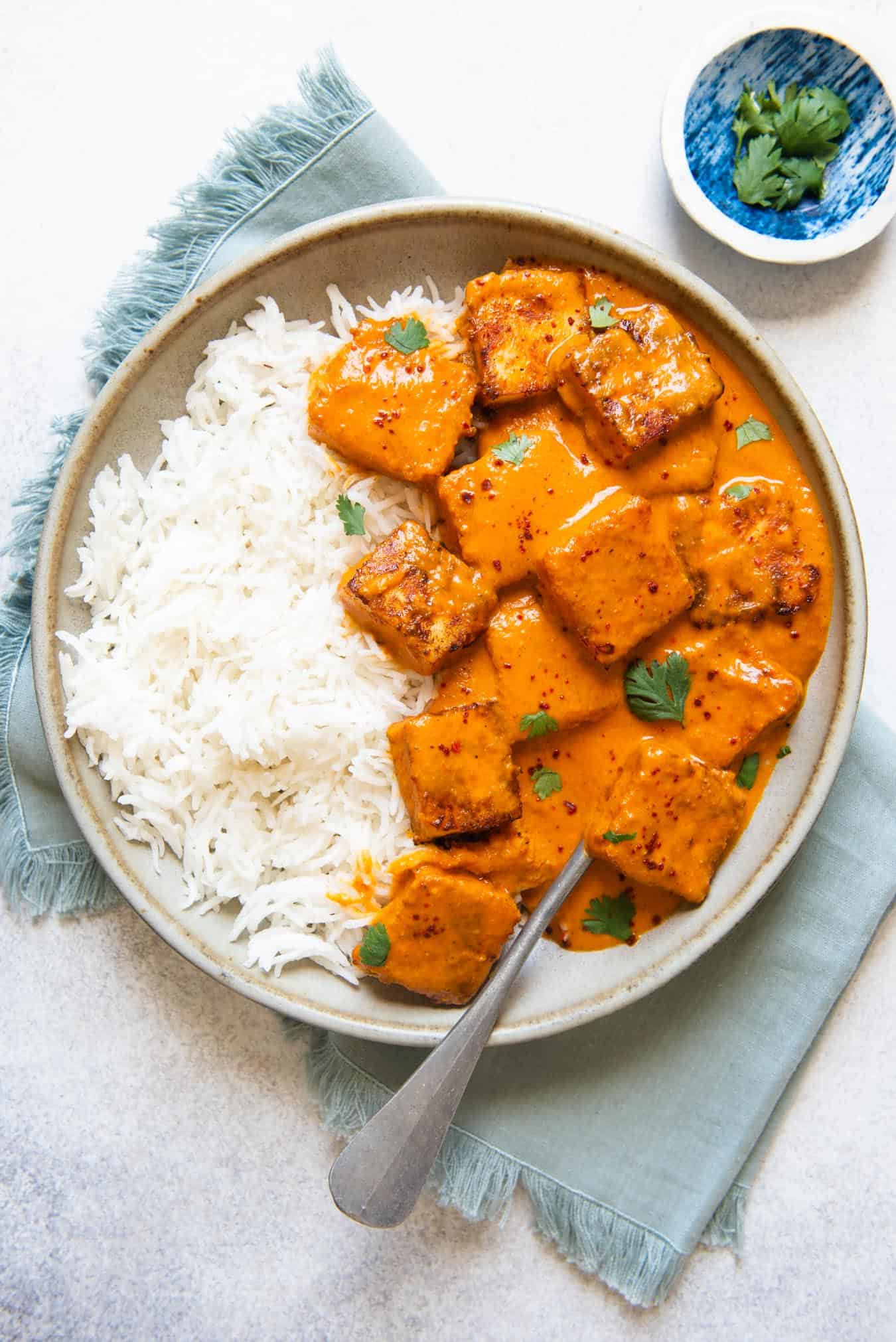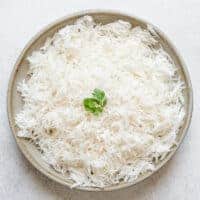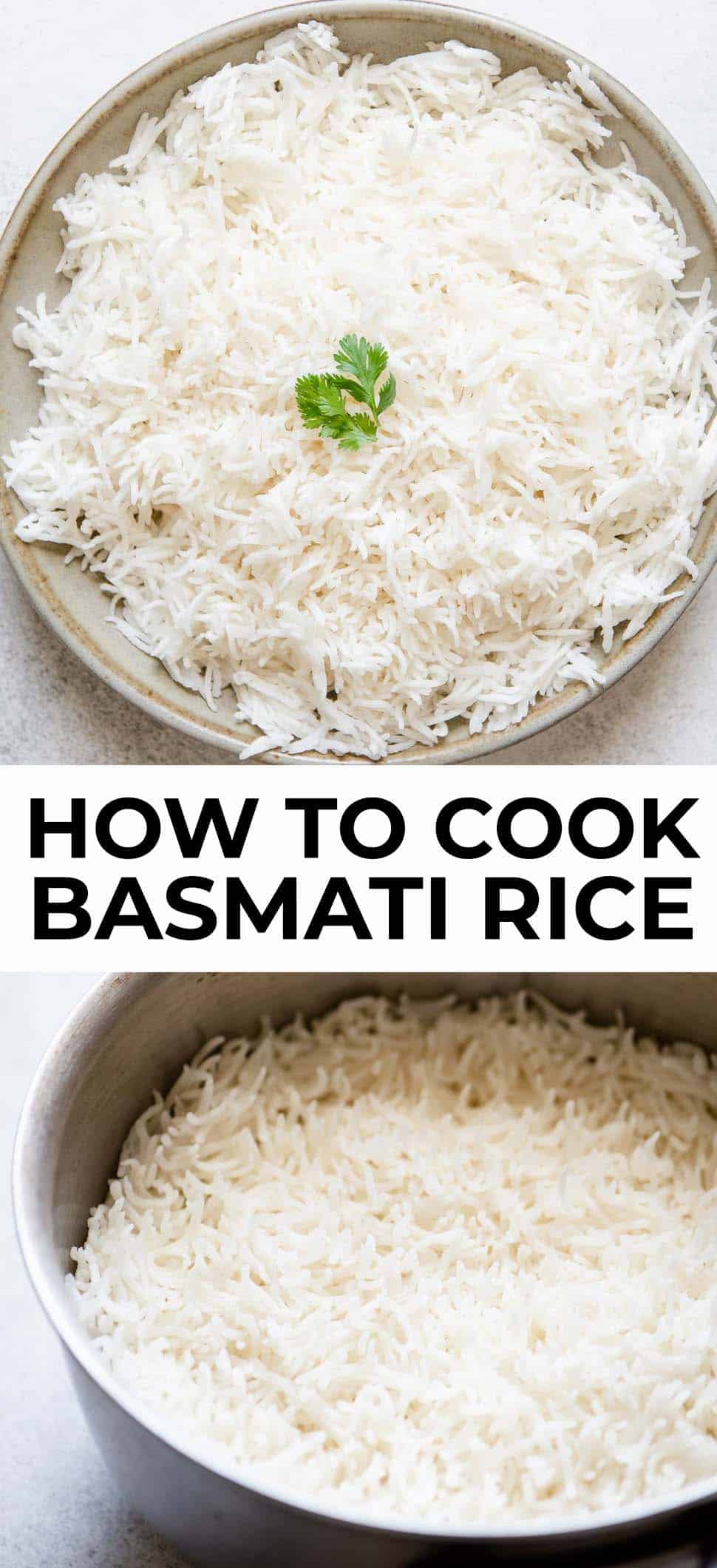Basmati rice is a thin, long-grain rice that is commonly used in the cuisines of the Indian subcontinent, Central Asia, and the Middle East. Meaning “fragrant,” basmati rice has a subtle nutty flavor. India generates most of the world’s production of basmati rice. Most basmati rice that is imported to the U.S. has been aged for at least 6 months to intensify its nutty aroma. Being from Northern California, it is also common to see locally produced basmati rice, such as the ones grown by Lundberg Family Farms. Besides its flavor, what I love most about the rice is that the grains can become incredibly long once they’re cooked, about 3/4-inches in length. In order to get this distinct shape, you need to soak the rice first and use the same water to cook the rice. It took me quite a number of tries before I got it right! Here are some tips on how to cook perfect basmati rice.
HOW TO COOK BASMATI RICE
WASH THE RICE
Rinsing the rice washes away excess starch and helps to keep the rice from clumping once cooked. When you first wash the rice, the water will look slightly milky (see photo above, left). Drain and wash the rice with fresh water 4 more times. Eventually, the water will look quite clear (see photo above, right).
SOAK THE RICE
Technically speaking, basmati rice does not need to be soaked before cooking; you’ll have fully cooked rice if you follow the directions below and omit the soaking. However, the rice will look similar to jasmine rice (see photo above, left). In other words, the grains of rice will not expand to long 3/4-inch grains unless you soak it (see photo above, right). The soaking process allows the rice to absorb moisture and relax before cooking.
COOK RICE WITH WATER USED FOR SOAKING
When testing the recipe, I compared the differences between two cooking methods: (1) cooking the rice with the same water used for soaking; and (2) draining the water used for soaking and then cooking the rice with fresh water. I was surprised that there was a noticeable difference between the two methods. The soaked rice cooked with fresh water yielded grains that were shorter! The cooking methods explained below are very similar to the ones that I use for my jasmine rice recipe. I have outlined the methods on how to cook basmati rice on the stove and in the Instant Pot and slow cooker. No matter which cooking method you choose, you’ll still need to rinse the rice several times first. Personally, I prefer the stovetop and Instant Pot methods because they are quicker. The texture of the cooked basmati rice from these two methods is chewier, which I like. You may notice that the amount of liquid specified in the recipe is less than what you see in many other recipes. That’s because I believe in using only as much liquid as necessary to cook through the rice. Excess liquid leads to mushy rice.
WHAT TO SERVE WITH BASMATI RICE
Paneer Tikka Masala (photographed above)Chicken Tikka MasalaSpiced Pan-Fried PaneerPalak Paneer


